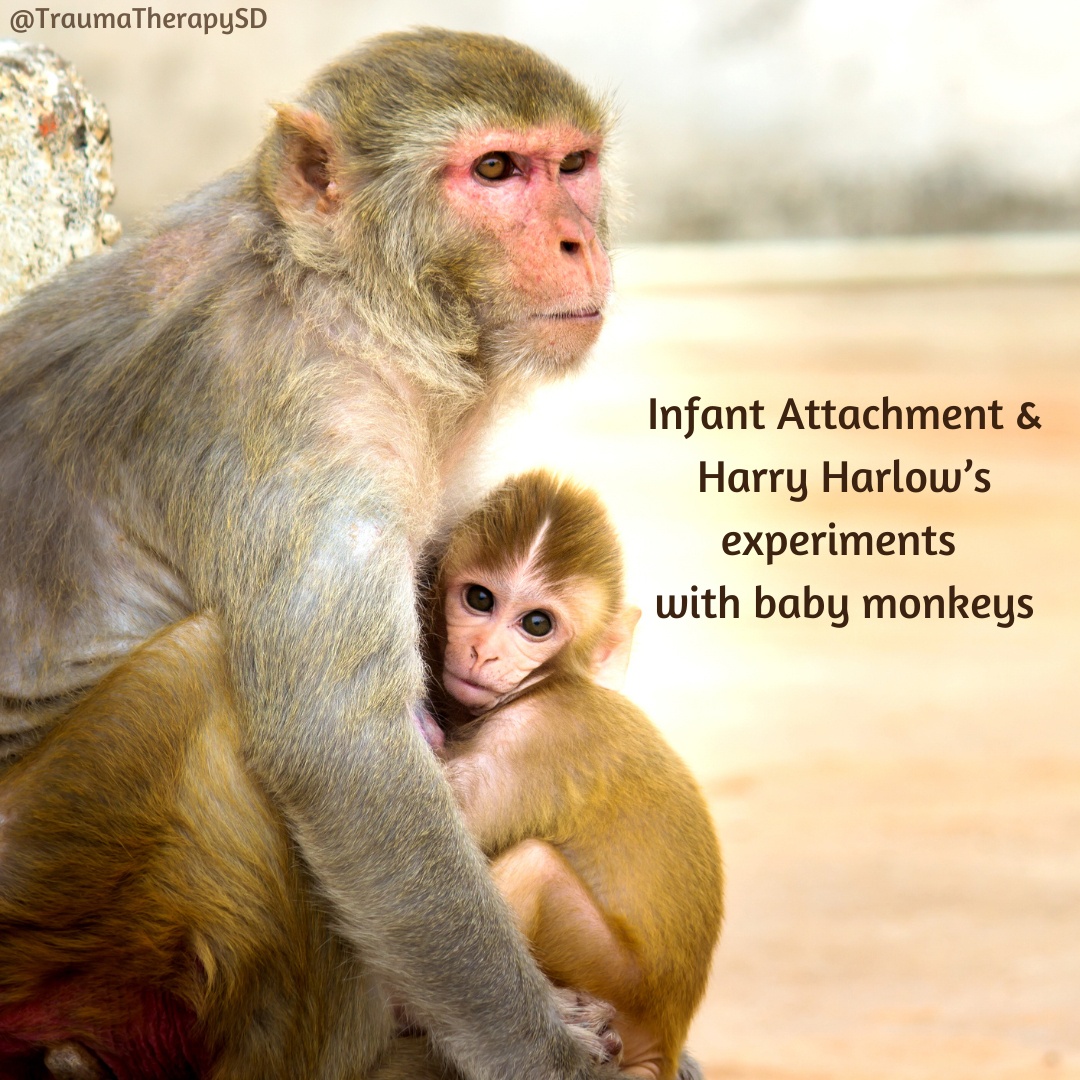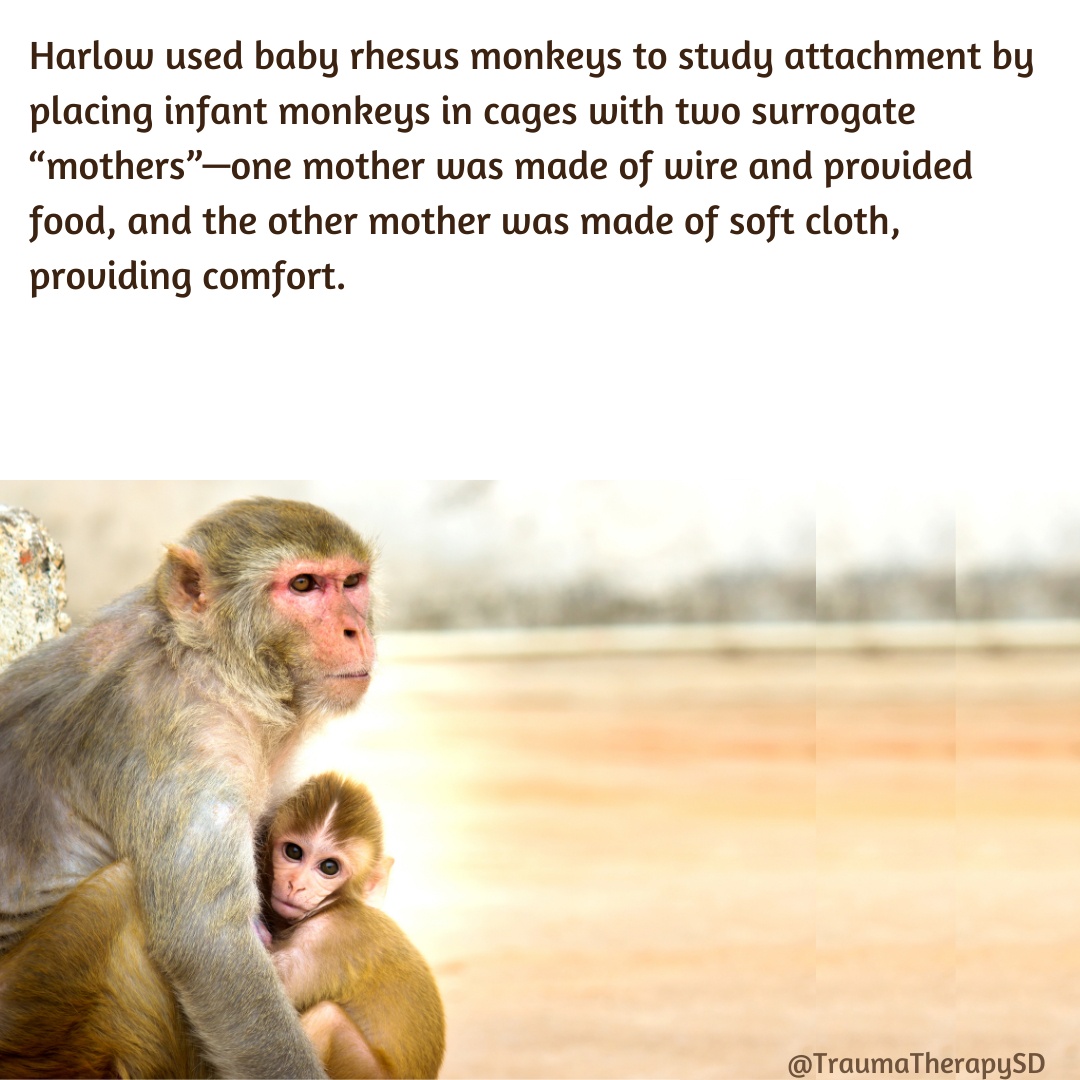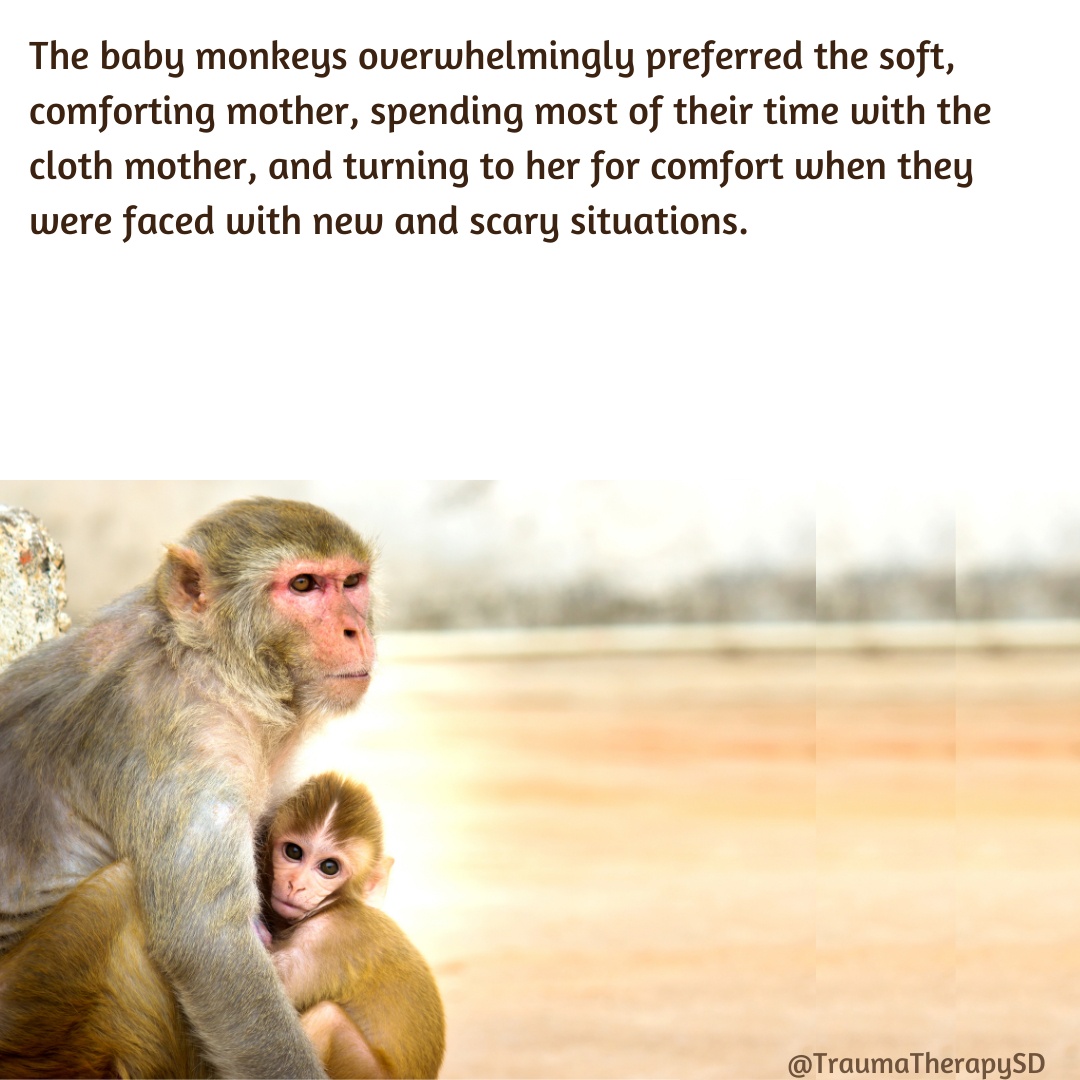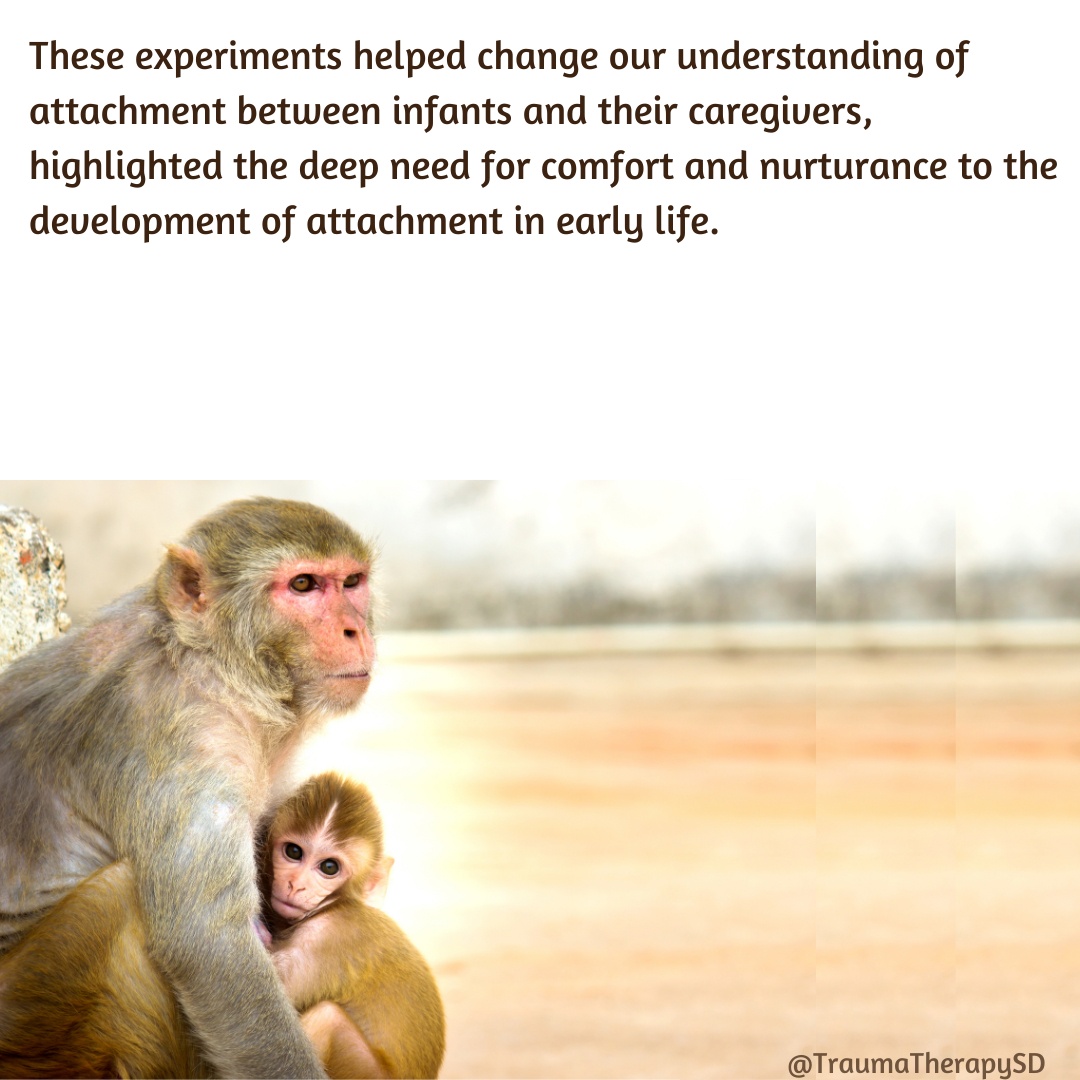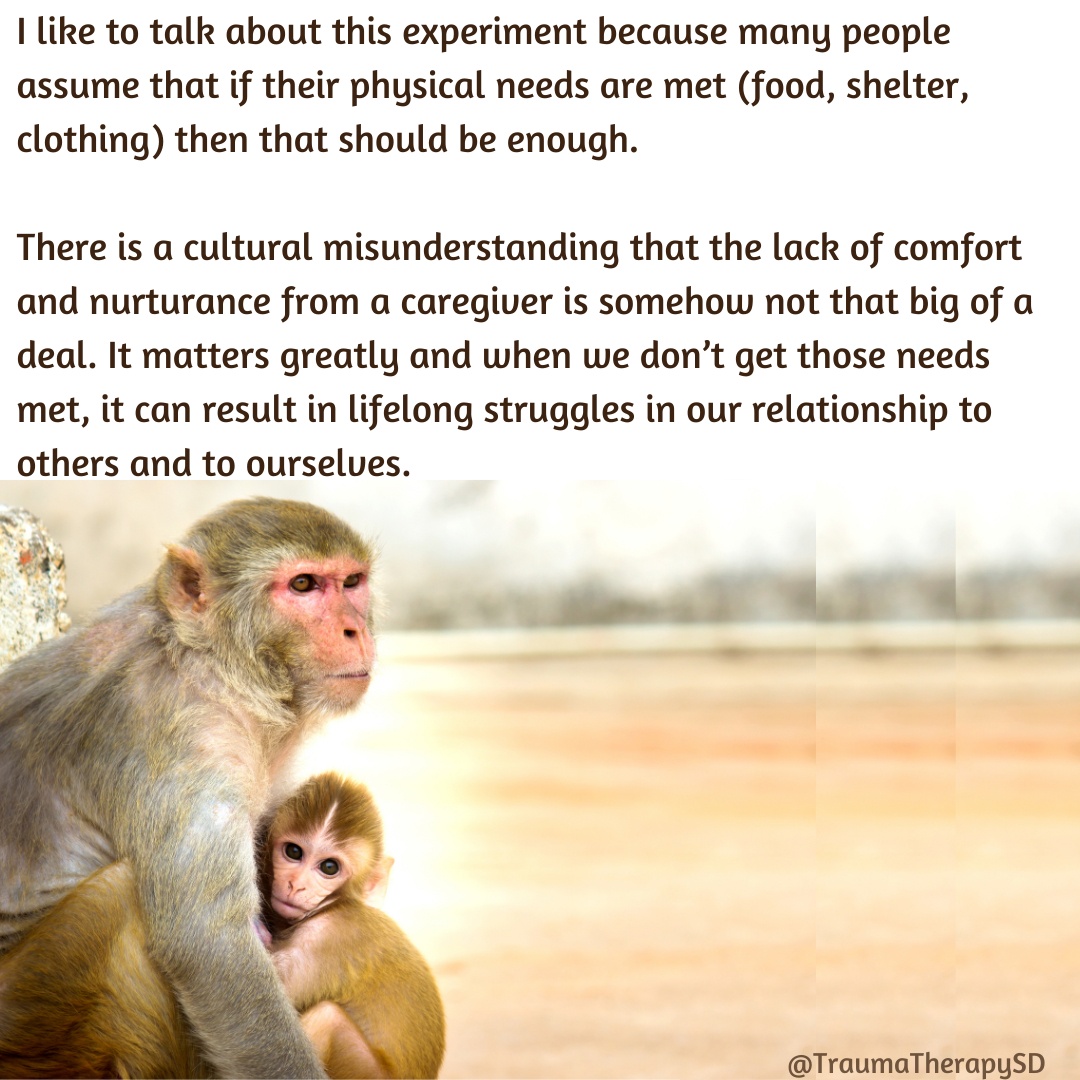Harlow’s Attachment Research
Harry Harlow’s behavioral experiments with rhesus monkeys are considered classic and revolutionized our understanding of the role of relationships and attachment play in early development.
These experiments were conducted in the 1950s and 60s and explored the importance of nurturance and comfort versus the importance of providing food and physical sustenance in infant development and attachment.
Harlow used baby rhesus monkeys to study attachment by placing infant monkeys in cages with two surrogate “mothers”—one mother was made of wire and provided food, and the other mother was made of soft cloth, providing comfort.
The baby monkeys overwhelmingly preferred the soft, comforting mother, spending most of their time with the cloth mother, and turning to her for comfort when they were faced with new and scary situations.
These experiments helped change our understanding of attachment between infants and their caregivers, highlighted the deep need for comfort and nurturance to the development of attachment in early life.
I like to talk about this experiment because many people assume that if their physical needs are met (food, shelter, clothing) then that should be enough.
There is a cultural misunderstanding that the lack of comfort and nurturance from a caregiver is somehow not that big of a deal. It matters greatly and when we don’t get those needs met, it can result in lifelong struggles in our relationship to others and to ourselves.

